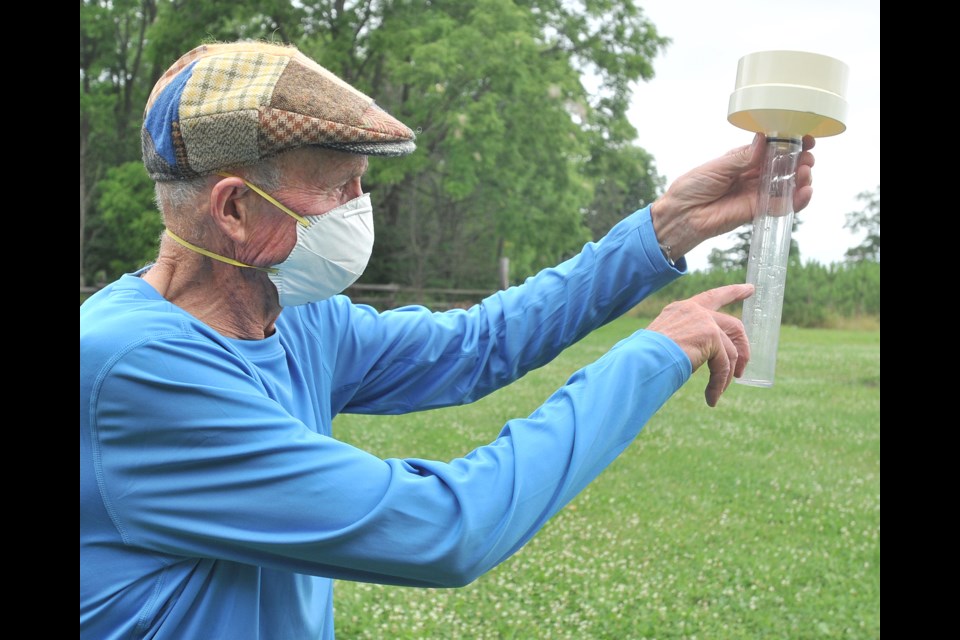Just how much rain fell in the area on June 24, 1973?
John Dunsmore knows.
The amount of rain that fell in the same area during this past Sunday’s torrential downpour, or how much fell on some soggy days in the 1970s, are reflected in his pastime and his love of Mother Earth.
Dunsmore knows the stats, and he — and Environment Canada — has the paperwork to prove it.
The local farmer — who has been on the same family farm in Oro-Medonte Township for 57 years — has been collecting two temperature and precipitation readings every single day for almost 48 years (he would say 47-and-a-half years, because he prefers to be accurate) from his Ridge Road property.
He takes the temperature and precipitation readings at roughly 6:30 a.m. and 6:30 p.m.
“On Sunday, 98.6 millimetres, almost four inches of rain, fell. That’s two months worth. I’ve never recorded more than 50 mm in 24 hours,” says the 81-year-old. “In June and July (in total) we got 115.4 millimetres.”
Over that almost half-century of recording temperature and rainfall, Dunsmore’s passion for the environment has never waned.
“We’ve never missed a reading,” he says proudly while standing next to a Stevenson screen weather station, which reflects the daily high and low temps and rainfall, and is located near the family’s home.
“When our girls (that would be he and wife Rosemary’s children) were in high school and university, they were quite capable of doing it, so we’d get away for a day or two sometimes. And Rosemary would take readings, too.”
While stats are now sent in via computer, Dunsmore might not be so keen on the high-tech version of data collection.
“I keep my own written records,” he says while standing on his veranda next to a stack of binders — many from the '70s — written in his own hand writing. “A lot of (Environment Canada’s) weather reporting is done electronically now, but I think it’s very important to have eyes in the field to see what’s going on, because these electronic things break down. Whereas a person is out there and sees what’s going on.
“If those things break down on a Friday night, they might not get a reading until sometime Monday.”
But it isn’t just those binders on his front porch which remind him of how weather and climate have changed.
Rosemary’s family, the Raikes, set up shop on the land in the 1850s, and since then and over the years she and John have raised beef cows, calfs and worked a mixed farming scenario, along with a host of animals.
Now most of the property is run under a managed forest plan.
“I’ve been a farmer all my life and what you do each day depends on the weather. I find the weather is changing very fast, as far as our temperatures and precipitation are concerned. Everything,” says Dunsmore, adding it is definitely not restricted to these or other parts of southern Canada.
“We used to see the Northern Lights up to the 1980s and I haven’t seen them since, because we have interrupted everything in the north. The north is melting; the Earth is changing,” he says while speaking through a COVID mask. “We should be very concerned about what is happening about our Arctic and the Antarctica, too. It’s staggering.
“It’s going to change our weather. I just don’t know what’s going to happen. It’s just unpredictable, as far as I’m concerned,” Dunsmore adds.
“The winters here aren’t nearly as cold as they used to be and the summers seem hotter. The ice on Lake Simcoe freezes later and breaks up earlier.”
Oh yes: about that June 24, 1973 rainfall? It would be .88 inches or about 20 millimetres.
